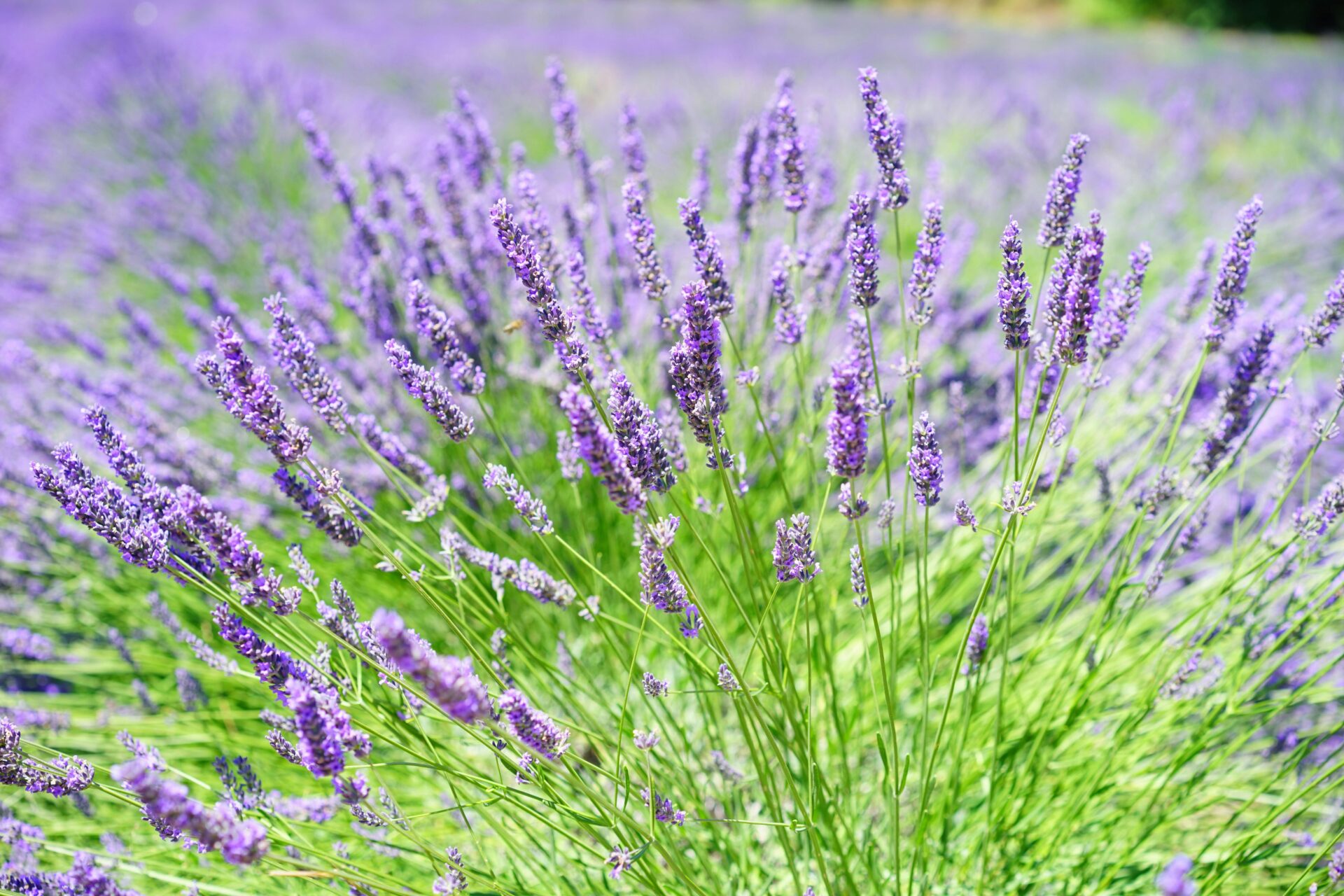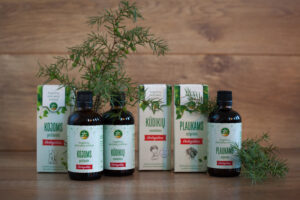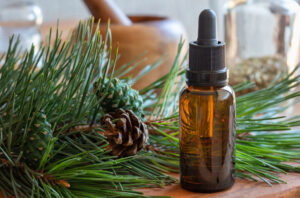Lavender (Lavandula angustifolia)
Plant family: Labiatae
Sinonimai
Common lavender, English lavender, French lavender, Spanish lavender
Kilmė
Lavender is an aromatic shrub native to the Mediterranean region and has long been used as a medicine, fragrance and insect repellent. Essential oil production is long established in the Provence region of France, as well as in Spain, Bulgaria and many other countries.
Gamybos būdas
The oil is obtained by steam distilling the fresh tops of flowering plants. Up to 100 kg of fresh lavender is needed to produce 1 kg of essential oil.
Aliejaus pobūdis
Colourless or pale yellowish liquid. Lavender oil has a very familiar, fresh, floral, slightly spicy and sweet scent that is refreshing, relaxing and generally therapeutic.
Aromatic note – middle note – the aroma lasts for two to three days.
The scent of lavender is reminiscent of the flowers from which it is extracted and can be described as feminine, delicate, demure, romantic and even poetic. It has a sweet smell and creates a sense of fun. The scent of flowers is considered classic and timeless.
Main ingredients
| Linalyl acetate | 25.0 -47.0% |
| Linalool | 20.0 -43.0% |
| Limonene | 0.0 -1.0% |
| 1,8-Cineole | 0.0 – 3.0% |
| Cis-b-Ocimenas | 1.0 – 10.0% |
| Trans-b-Ocimenas | 0.5 – 6.0% |
| 3-Octanone | 0.0 -3 .0% |
| Camphor | 0.0 -1 .5% |
| Terpinen -4-ol | 0.0 – 8.0% |
| Lavandulyl acetate | 0.0 – 8.0% |
| Lavandulol | 0.0 – 3.0% |
| alpha-Terpineol | 0.0 – 2.0% |
| p-Cymen | 0.0 -0.2% |
Savybės
Skin care (for most skin types), acne, allergies, bruises, eczema, dandruff, dermatitis, burns, frostbite, psoriasis, fungus, scabies, insect bites, insect repellent, asthma, earaches, coughs, colds and flu, catarrh, laryngitis, nausea, colic, cystitis, painful periods, depression, headaches, insomnia, migraine, nervous tension, premenstrual syndrome, stress-related disorders.
Terapinės savybės
Lavender oil is the most versatile and best-used of all essential oils because it is non-toxic. It is a valuable tool for everyday use. It can be used in massage blends, bath oils, room fragrances, compresses, showers, inhalations and is one of the few essential oils that can be applied to the skin without dilution.
Lavender oil is a balancing or regulating oil. It has a relaxing or calming effect over time, although initially it has a revitalising effect – a foot bath with a few drops of lavender has one of the most restorative effects imaginable. Like jasmine, it can be used to treat any physical symptoms resulting from stress or nervous tension.
Lavender is relaxing because it soothes the brain and spine. It can be used to treat irritability, depression, insomnia, hysteria, shock and nervous tension. It also has mild analgesic properties, making it an important oil in the treatment of headaches and migraines, as well as useful for all forms of neuralgia, shingles, sciatica, muscular aches and rheumatism. This will relieve children’s ear pain; massage a few drops around the ear.
The restorative and calming effect on the heart means it is useful for high blood pressure and heart palpitations – use in massage and bath preparations and as an inhaler to relieve fainting and shock.
The antispasmodic properties of lavender make it effective in treating any spasmodic cough. Its excellent antiseptic properties are effective in treating flu, bronchitis and pneumonia.
Aromatherapy uses
Skin care (most skin types), acne, allergies, “athlete’s foot”, furuncles, bruises, eczema, dandruff, dermatitis, burns, cold allergy, psoriasis, fungus, scabies, insect bites and stings, as insect repellent, asthma, earache, cough, colds and flu, catarrh, laryngitis, nausea, colic, cystitis, painful menstruation, depression, headaches, insomnia, migraine, nervous tension, premenstrual syndrome, stress-related disorders.
Psychological aspect
If you are a sensitive person who is easily embarrassed and inhibited, you need lavender. You may have learnt to hide your shyness by appearing efficient, practical and organised, but you know that underneath it all there is sensitivity and vulnerability. Using lavender will help you to acknowledge your sensitivity and make the most of new situations that often make you feel frustrated and unable to express yourself.
Puikiai tinka naudoti su:
Bergamot and other citrus oils, clove, eucalyptus, frankincense, juniper, juniper, coriander, cedar, cypress, cypress, marjoram, myrtle, clary sage, geranium, pine, rosemary, rose, sandalwood, ylang ylang essential oils.
Mūsų saugos patarimai
On the skin, a maximum of 0.1% is based on the 0.12% used by Bouhlal et al. (I 988b) has been identified as the maximum concentration causing adverse skin reactions.
Įspėjimai
It is generally considered to be non-irritating and non-sensitising. However, there have been reports of contact dermatitis due to excessive use of the oil, especially among aromatherapists themselves. It is also possible to be sensitive to one type of lavender oil but not another, even though both types may be labelled ‘L. officinalis’. This could mean that the oil has been adulterated or oxidised. Oils are much more likely to irritate the skin when used undiluted or in very high concentrations.
Other species
In the past, lavender essential oils were heavily adulterated, but now other varieties are used in soaps, household products and cheaper perfumes, while the real lavender is reserved for therapeutic use and better quality perfumes. Unfortunately, it is still counterfeit with lavandin (because demand is always greater than supply), whereas real lavender should be bought from someone who knows the source, and sometimes even from a farmer!
Nuorodos:
1. C. Wildwood “The Encyclopedia of Aromatherapy”, Vermont, Healing Arts Press, 1996
2. R. Tisserand, R. Young, E. M Williamson “Essential Oil Safety. A Guide for Health Care Professionals”, Churchill Livingstone ELSEVIER, 2014
3. S. Curtis “Essential Oils”, AURUM, London, 1996
4. R. Balz “The Healing Power of Essential Oils”, LOTUS LIGHT SHANGRI-LA, Twin Lakes, 1996
5. Л.ГДудченко, Г.П.Потебня, Н.А.Кривенко «Ароматерапия и аромамасаж», «Максимум», Киев, 1999





